
A jump in transmission voltage is the ladder of human electrification.
In 1891, the world's first high-voltage transmission line was born, its voltage is only 13.8 kv;
In 1935, the United States will 220 kv voltage increased to 275 kv, the human society appeared for the first time ultra-high voltage line;
In 1959, the former Soviet Union built the world's first 500 kv transmission line, which is a huge leap in the level of human use of electric energy;
In 2009, the world's first 1000 kV southeast Jinshan-Nanyang - Jingmen ULTRA high voltage ac test demonstration project was put into commercial operation, this time leading the world is China!
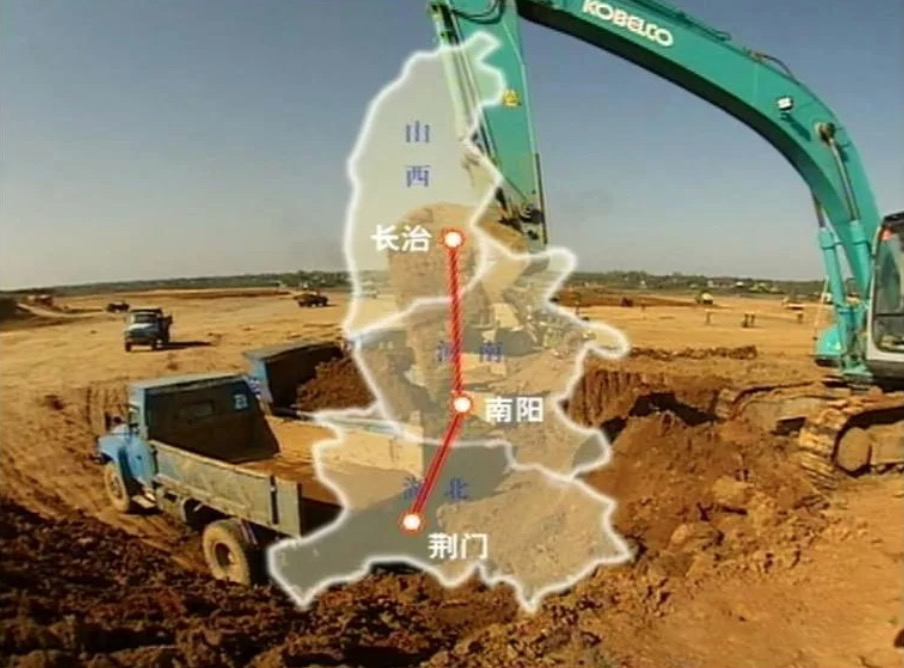
Unlike high-speed rail and 5G, where China leads the world, in the field of ultra-high voltage power transmission, China is truly unique and will be the world's number one.
01.
Electricity is a kind of energy with certain particularity. It is instantaneous and cannot be stored basically.
The high cost and low energy density of storage in batteries make it uneconomical. And the threshold of power generation is relatively low, like many communities and factories have their own emergency power stations, like fuel car engines can power batteries in the process of running.
The non-storage of power resources means that power generation and power supply need to form a balance, a dynamic balance.
That's where transmission comes in.
India's electricity output was the world's third largest in 2017, but much of the country often has limited hours of electricity because of inadequate transmission lines. Transmission power P=U*I (voltage * current), to improve the power, either increase the current or increase the voltage, and the excessive current will lead to the increase of the line heating power, not only the loss of energy and easy to cause security risks, so it is necessary to increase the voltage.
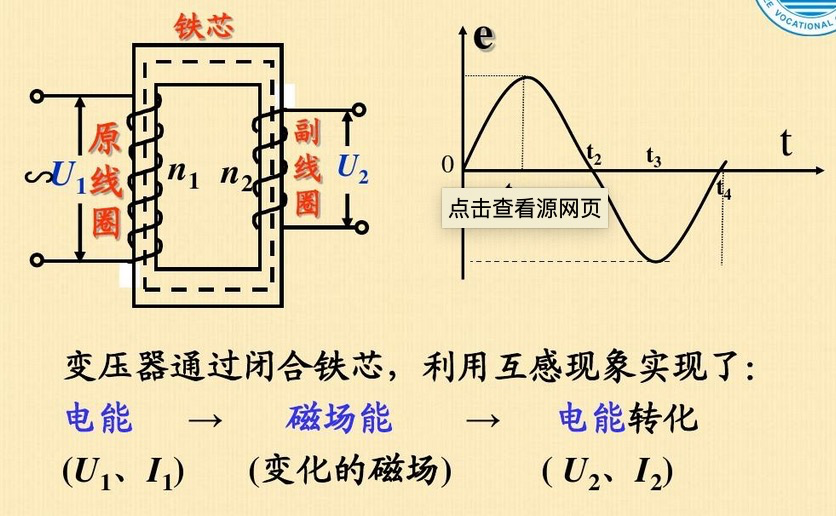
The higher the voltage, the higher the transmission capacity, the more power can be transmitted, the lower the power loss, and the transmission can be achieved over long distances. This long distance transmission, in particular, is critical. The heat loss on the line is proportional to the length of the line. If the line is stretched too long at low voltage, the power is used up on the line.
Long-distance transmission is to fundamentally solve the problem of unbalanced power supply and demand.
In the 1980s and 1990s, and even into the early 2000s, electricity was a priority for industrial production, followed by residential power. At that time, electricity supply was limited in rural areas, while cities introduced peak and trough electricity prices to limit peak consumption. The peak price is more than three times more expensive than the valley price. Why can the price of electricity fluctuate so much in a few hours? Because of the "instantaneity" of electricity, people can not supply electricity at night, so they can only reduce the electricity demand of some families by raising the price of electricity.
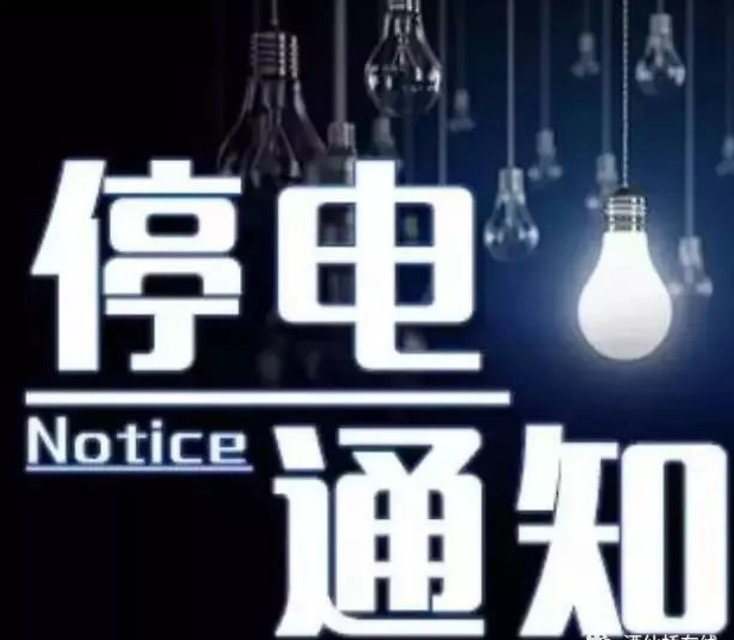
Factories use electricity at staggered peaks, spreading demand as evenly as possible. Until the summer of 2003, there were still 22 provinces across the country to cut power supply, residents' demand for electricity could not be fully met, and economic development was also stuck in the "bottleneck" of power shortage.
76% of China's coal, 80% of its wind power, 90% of its solar energy are distributed in the north and west, 80% of its water energy is distributed in the southwest, and more than 70% of its electricity consumption is concentrated in the east and central regions.
On the one hand, the resource-rich provinces of the central and western regions have wasted electricity, and on the other hand, the economies of the eastern regions are short of electricity. The imbalance between supply and demand of power resources even exists between regions in the province.
Zhang Guobao, former vice Chairman of the National Development and Reform Commission and director of the National Energy Administration, once told about his experience at ertan Hydropower Station around 2000. He was in charge of power distribution. Ertan Was the largest hydropower station ever built and put into operation in China, but its annual operating hours at that time were only 5,162 hours, equivalent to only seven months. There are still five months of the year when the generator set is idle.
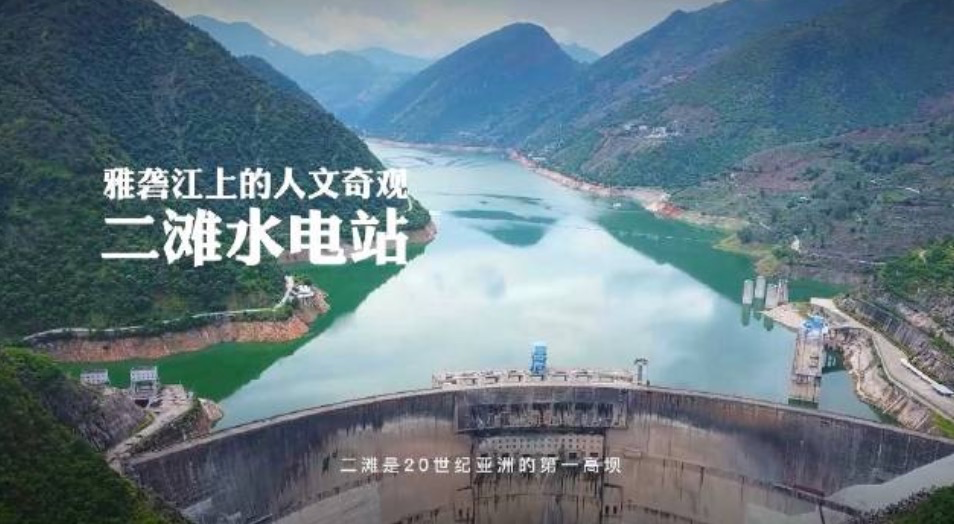
Why is that?
No one knew where to send the electricity.
At that time, the electricity produced by Ertan hydropower station could only be sent to Sichuan province. Zhang Guobao approached Lu Tingchang, then vice minister of the Ministry of Electric Power Industry, hoping to transport the electricity from Ertan. Lu Tingchang calculated that ertan's installed power was 3 million kilowatts, and a 500 kv AC transmission line could only send more than 900,000. Ertan needed at least one 500 kv and three 220 kV transmission lines. According to the level of China at that time, the cost was high risk, even if there was a long-term imbalance between supply and demand of electricity. Nor is it certain to build a high-voltage transmission line to solve the problem.
So they had to generate electricity nearby. Complete the energy allocation of our country by means of large-scale and long-distance coal transport. At the turn of the century, more than 70 per cent of new rail capacity was used to transport coal. At that time, there was a power plant every 30 kilometers along the Yangtze river, all of which were small and medium-sized power plants that burned coal to generate electricity. Why is the problem of shanxi black coal kilns so serious more than 20 years ago, because the demand for low-price coal from small kilns is too strong.
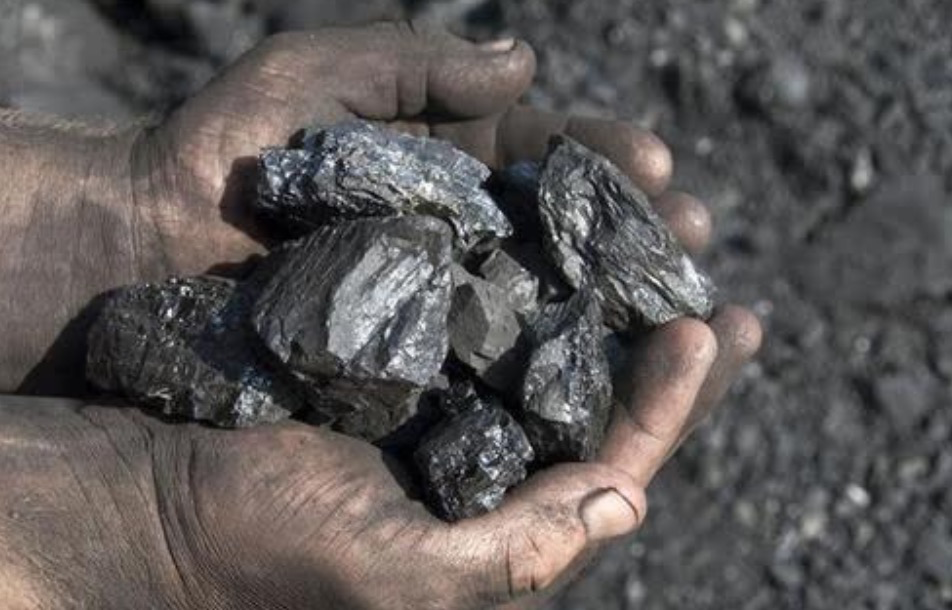
The Yangtze River Delta, the most economically developed region, emits 45 tons of sulfur dioxide per square kilometer per year, 20 times the national average, because it burns coal to generate electricity.
At that time, there was a saying that "heavy power generation, light power supply, no use". The enthusiasm of building power plants and generating power was very high, but they did not pay enough attention to power transmission and transformation, and even less to the user side management. Therefore, despite the rapid growth of power generation by power plants everywhere, the fundamental contradiction of unbalanced electricity consumption could not be solved.
As China's urban construction and industrial demand for electricity continues to rise, coupled with the increasingly prominent contradiction between development and environmental protection, it is time to solve the problem of local thermal power generation.
02.
At the end of 2004, Liu Zhenya, who had been at the helm of The State Grid corporation for two months, and the then head of the National Development and Reform Commission (NDRC) attended the inspection and acceptance meeting of the Three Gorges - Guangdong DC power transmission project. On the speeding bus, Mr Liu frets about China's lack of electricity, which has been "a serious drag on economic development".
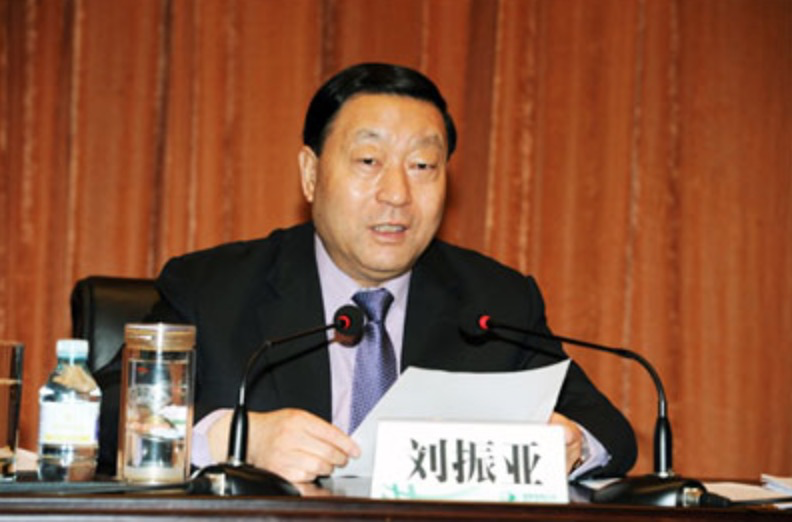
Liu Zhenya knows best, having worked in Shandong's power system for 20 years, starting in 1979 when he joined the Linyi Municipal Power Bureau. 'Shandong didn't have the concept of a power grid,' he recalls. 'Power plants were built wherever there was a shortage of electricity, as long as they could bring coal.' That is, "where the new urban areas and new factory areas expand, the power plant will be built."
In 2000, Liu joined the State Grid.
"When we look at China's energy resources and power supply and demand from a higher level, we deeply realize that the local balanced power development mode is the root cause of long-term tension and periodic and seasonal power shortage in China's coal power transportation."
In order to solve this problem fundamentally, it is necessary to develop transmission lines with larger capacity, longer transmission distance and higher voltage levels, to connect the isolated regional power grids of the country into a large power grid, improve the power grid 'capacity', and one day to distribute power throughout the country.
After 2004, promoted its head, him began to fast forward "grid upgrade" : the construction of electric power "highway", UHV power grid, the 1000 kv ac and + 800 kv and above DC transmission lines, and link into electricity networks across the country, reverse the long-term development of Chinese electric power is subject to the problem of coal transport capacity.
Before this, China's highest level of transmission line is 500 kv, is the last century in the 1980s began to build from Gezhouba to Shanghai gehu line, a full set of technical equipment are introduced from abroad. In addition, the transmission and transformation lines of the whole country at that time were basically 330 kv and 220 kV.
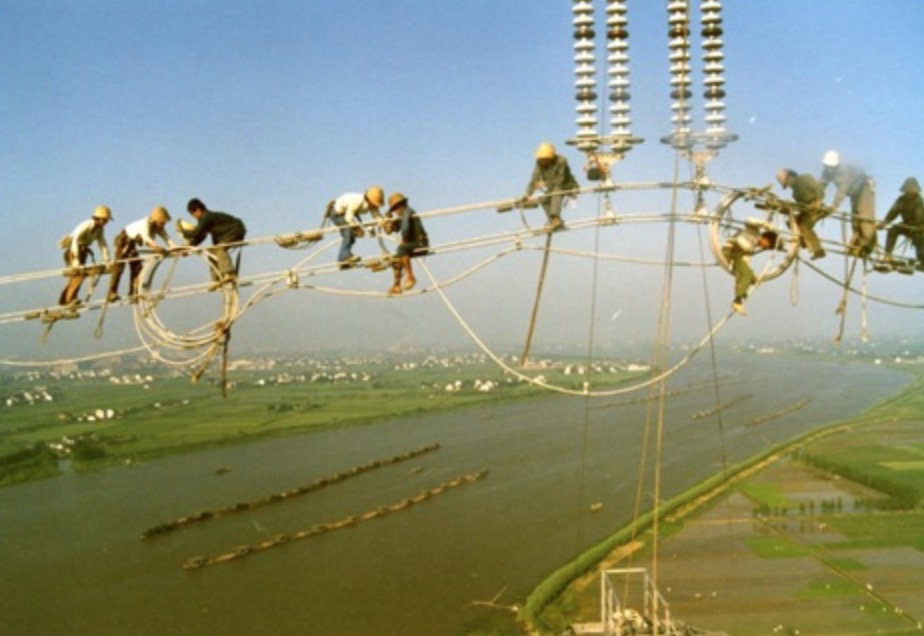
▲The Ge hu Line crosses the Huangpu River
500 kV are highly dependent on foreign countries, now to go directly to 1000 kV, the power grid has the voice of opposition, that should be steady, the first 500 kv, and then do 750 kv in some areas, a big step may not go steady.
The attitude of Zhang Guobao and Liu Zhenya is determined to reach the goal in one step, now do 750 kv, the money did not spend less, after ten or eight years to 1000 kv again.
Compared with 500 kV UHV AC power transmission, 1000 kV UHV AC power transmission distance increases 2-3 times, transmission capacity increases 4-5 times, transmission loss is only 1/3, corridor width is only 1/3, and unit cost is only 70%.
Compared with ±500 kV UHVDC transmission, the distance of ±800 kV and ±1100 kV UHVDC transmission increases 2-3 times and 5-6 times respectively, transmission capacity increases 2-3 times and 4-5 times respectively, transmission loss is less than 1/2 and 1/4, corridor width per unit capacity is only 65% and 55%, and unit cost is only 65% and 40%.
UHV power transmission is the infrastructure for the transmission of electricity from the west to the East, and we must have enough imagination about the speed of China's development, they repeatedly stressed.
In January 2005, The State Grid Corporation of China started a feasibility study on UHV transmission and submitted it to the NDRC later that year. On February 16, the National Development and Reform Commission (NDRC) proposed to "start the preliminary research on China's one-million-volt AC and plus or minus 800,000 volt DC UHV transmission technology". On March 21, state Council leaders presided over the meeting and Liu Zhenya made a report. The meeting clearly agreed to develop UHV power grids and incorporate UHV into national major equipment planning.
The challenges, however, have only just begun.
When you're trying to do a new job, feeling your way can be a blessing, because a lot of the time, you don't even have a chance to feel your way.
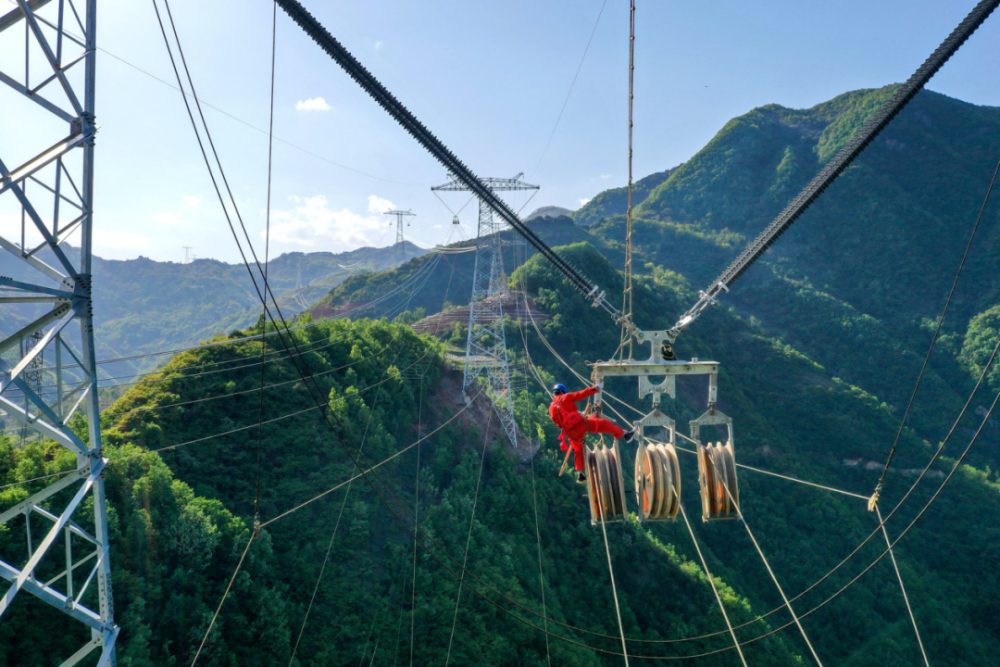
This is the case with UHV transmission.
At that time, no country in the world had an UHV transmission line.
In the 1960s, the United States began to think about 1000 kV UHV power transmission, and the technology was basically conquered. When the planning project was started, the OIL crisis and the wave of deindustrialization in the 1970s, the UHV power transmission technology in the United States went bankrupt. On top of that, America's grid is privately owned and fragmented, and UHV technology is not suitable for large-scale transmission.
In Japan, two UHV lines were built in the 1980s, but as the economic downturn and occasional safety incidents caused the government to gradually reduce the size of nuclear plants, UHV lines were reduced to high voltage lines.
The Soviet Union, too, built a 900km UHV transmission line in 1985. After five years of intermittent operation, UHV ceased to exist after the collapse of the Soviet Union in 1991, which reduced the demand for electricity on the line.
These three developed countries have given up. Why does China insist on ultra-high pressure? Will this project ever get off the ground? Is it practical? That was the question on many people's minds at the time.
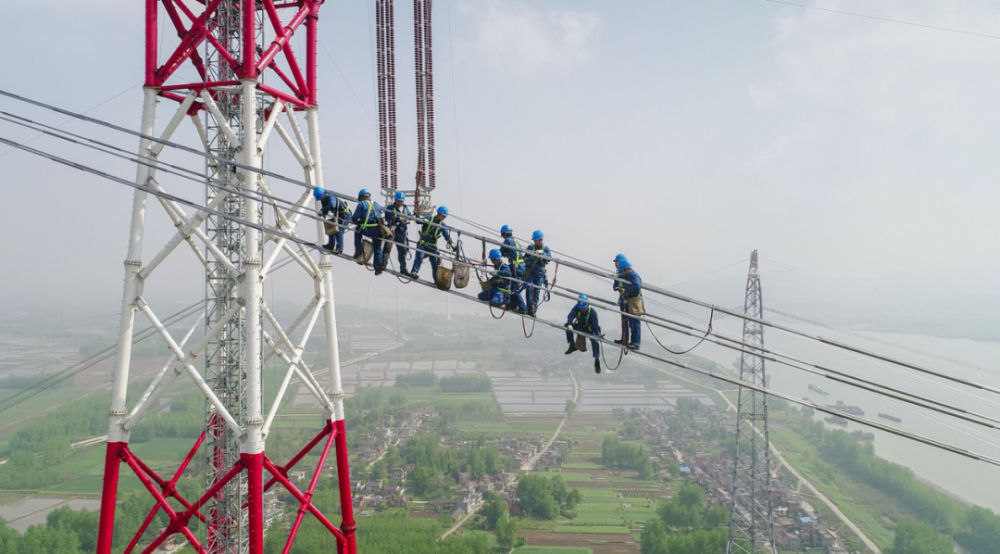
03.
In May 2005, a report entitled "Problems and Suggestions on the Development of UHV Power grid" was submitted to The State Council. Less than two months have passed since The State Council agreed to carry out ultra-high voltage power transmission.
The report raised concerns about the safety and necessity of UHV projects, and The State Council, acting on the principle of caution, decided to hold another high-level demonstration meeting.
From June 21 to 23, 2005, the National Development and Reform Commission held a seminar on UHV transmission technology in Beidaihe. "More than 200 people participated in the demonstration, including electricians and power equipment experts."
The issues discussed are mainly in four aspects: the comparison of transmission and coal transport, the safety of UHV transmission, maintenance and operation costs, and the impact of electromagnetic environment.
In fact, these four problems can be divided into two categories. Coal-power comparison is the prerequisite for the necessity of UHV projects, and the last three are the guarantee for implementation.
According to the calculation, the electricity from the large coal power base in the western and northern parts of China is transmitted to the load center in the eastern and central parts of China through UHV, and the on-grid electricity price is 0.06-0.13 yuan/KWH lower than the local benchmark on-grid electricity price of coal power. That means that the electricity from UHV is about ten cents cheaper at a time.
Shanghai's annual electricity consumption in 2004 was about 90 billion kilowatt hours. Using UHV transmission could reduce the city's electricity costs by $9 billion a year, which would pay for itself in two or three years.
But at least from the point of view of transporting coal or transmission, it was quickly agreed that it was indeed cheaper to transport coal from the grid than by rail.
And in the safety, maintenance cost, electromagnetic impact, then fell into a protracted debate.
The conclusion of this Beidaihe meeting is that the MATT high pressure project can be carried out, but some key issues need to be further demonstrated. In order to get a comprehensive understanding of the development of UHV, Liu Zhenya personally led the team to investigate. When he was in Japan, he even got off the bus halfway and walked up the hill under the power line just to hear how loud the noise was.
On October 31, 2005, NDRC held the second meeting, some opponents continued to express opinions on safety, hoping to postpone the development of UHV technology.
In the environment at that time, self-contempt for its own technology and blind worship of European and American countries became obstacles to UHV projects. The progress of the project even fell into an endless cycle of "expert submission - State Grid Corporation report - government demonstration - expert submission again - State Grid Corporation report again - government demonstration again", and so on, everyone was very tired.
When Zhang Guobao later recalled this experience, he said with emotion: Don't mention Liu Zhenya, people like us all feel tired physically and mentally. In fact, arguing is not terrible, but only arguing without making a decision, this is a problem.
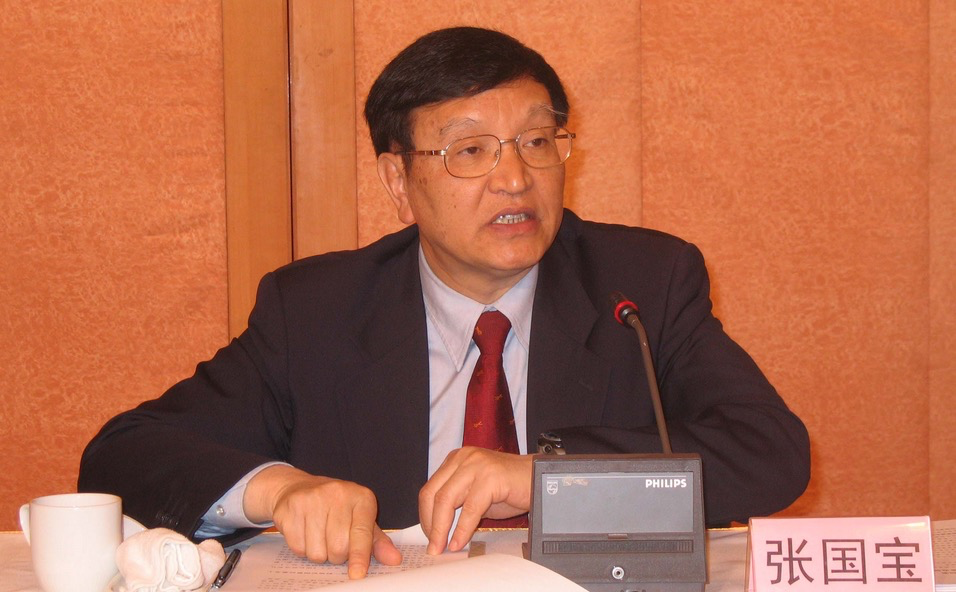
In the end, it was The State Council that made the final call.
On The New Year's Day of 2006, the Outline of the National Medium - and Long-term Scientific and Technological Development Plan (2006-2020) was released, which explicitly included UHV transmission technology.
At this point, Liu Zhenya and his state net can finally roll up their sleeves to do a big.
04.
Wang Shaowu, now the director of the UHV Department of the State Grid, was working in the UHV technical research team at that time. When he graduated from the UHV project of the State Grid, he was still half a "rookie". However, because no one in the State Grid had experience in UHV project at that time, he had the opportunity to advance to the front line.
He recalled that when he visited the Gezhouba-Shanghai DIRECT current transmission project after graduation, there was hardly any domestic equipment in the project. Even the chairs of the staff on duty in the converter station and the toilets in the substation were all installed from abroad.
It is under such circumstances that we can imagine how difficult it will be to reach the world-class level.
1000 kV UHV is not a simple amplification of 500 V UHV. There are still many key technical gaps to be filled, but also some supporting components to be developed.
Of course, this is not to be done by the State Grid alone. Dozens of scientific research institutions and universities, more than 200 equipment manufacturing enterprises, and more than 500 construction units have also carried out 309 major key technology research projects.
In order to speed up project progress under the condition of absolute safety, its test are of the utmost importance, successively established UHV DC test base, UHV ac test base, UHV engineering mechanics experiment base, high altitude test base, the national grid simulation center, UHV DC transmission project of complete sets of design research and development center (test), a total of four base two center.
The simulation center of State Grid is especially important. In judging whether the power grid is safe, all countries need to take simulation calculation as the evaluation basis. In the simulation of the power grid, see whether the lines and generators of each voltage can impact the safety of the main network in the process of operation.
Therefore, China Institute of Electricity Science and Technology has built the world's most advanced power system simulation platform. The panoramic simulation calculation of ultra-large UHV hybrid power system including 220kV to 1000kV power grid, 2258 generators, 35932 lines and 11547 nodes is carried out. More than 100,000 fault conditions and operation modes are simulated, which fully verifies the safety and reliability of UHV power grid.
We also made breakthroughs in the most critical core components.
UHV transmission is stuck in the transformer equipment, the core component of which is the converter valve, and the most difficult part of the converter valve is the thyristor. At that time, there were two programs: 5-inch and 6-inch. The former could be produced domestically with relatively low difficulty, while the latter had not been produced and used in the world.
The flow capacity is 3,000 amperes for 5 inches and 6,000 amperes for 6 inches.
State Grid internal mainstream opinion is the word first, but Liu Zhenya always insisted that to do it must be a step in place.
Six-inch is a blank all over the world, so we need to find the world's leading ABB company for joint research and development. Liu Zhenya is full of confidence: China is the only country in the world with this opportunity, and there is no place for his technology to go outside China.
Joint research and development, in fact, is an opportunity for us to catch up, foreign companies make a sum of money, we learn the skills, and then the vast Chinese market can be in our own hands.
For this point, Zhang Guobao saw more clearly:
"We are not simply buying equipment from others, but making it domestically, especially key equipment such as UHV transformers, switches and insulation. We must adhere to the principle that the research and development of major equipment must be combined with major projects. If it is not combined with major projects, air-to-air research and development will not be wanted, and the investment cost will be very high, and no benefit will be seen in the end."
In December 2007, Xu Ji Electric and ABB signed the agreement of joint research and development of thyristor. In May 2009, Xu Ji Electric handed in the operation to State Grid, all passed the test, and 5 months earlier than the contract requirements.
In addition, thanks to the development of UHV business, the company's revenue also increased rapidly, jumping from 3 billion in 2009 to 8.7 billion in 2013. With the support of capital and technology, Xu Ji Electric has invested more energy in research and development. Now the intelligent transformer and distribution system has surpassed the UHV business and become the largest revenue source of Xu Ji Electric.
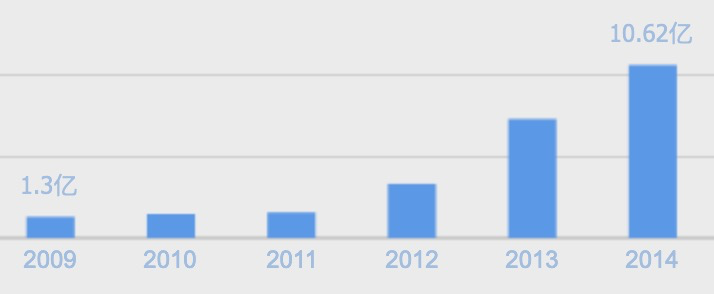
▲Xu Ji Electric net profit
From national conditions to technological breakthroughs to downstream enterprises, a benign closed-loop relationship of UHV transmission has been established.
05.
January 6, 2008, 1000 kV Jinsoutheast - Nanyang - Jingmen UHV AC line into commercial operation. It is the world's first commercially operational UHV transmission line.
On July 8, 2010, xiangjiaba-Shanghai ±800 kV UHVDC power transmission demonstration project was put into operation, marking the state Grid has fully entered the era of UHVDC hybrid power grid.
By the end of 2020, China had completed 35 UHV lines, including 14, 16, and 2, 3, respectively, under construction, with a total length of 48,000 km of UHV lines under construction.
The highest operating voltage, the strongest transmission capacity and the highest technical level have been repeatedly refreshed by China State Grid.
We have developed the world's first UHV technical standard system with completely independent intellectual property rights, and formed a full set of technical standards and specifications for UHV AC and DC engineering from design to manufacturing, construction, commissioning, operation and maintenance.
Chinese standards are international standards.
On September 26, 2019, the world's longest power transmission line, the Zhundong (Xinjiang) -Southern Anhui ±1100 kV UHVDC power transmission project was officially put into operation.
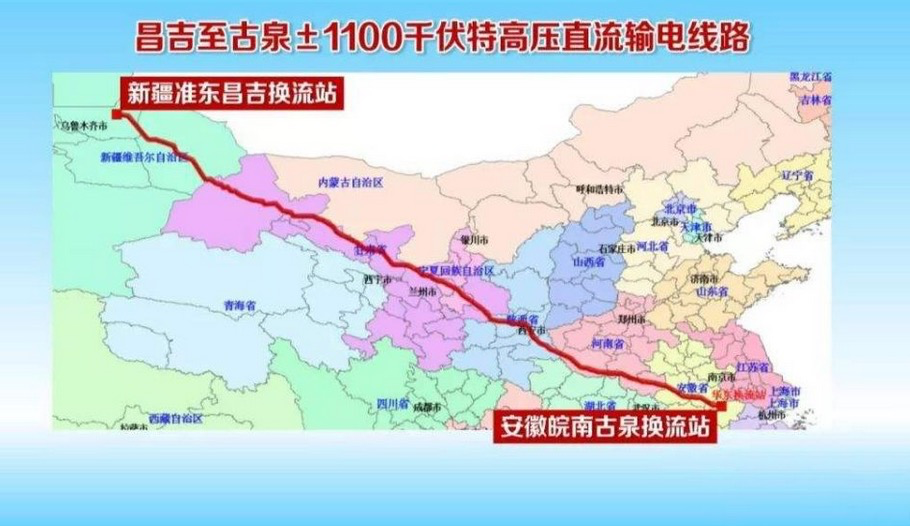
3,324 kilometers, from Xinjiang to Anhui, across six provinces, half of China. The transmission capacity reaches 12 million kilowatts, which can meet the electricity demand of 50 million households. This means that the transmission capacity of this line alone can cover the electricity consumption of residents in Anhui and Henan provinces. Reducing coal consumption by 38 million tons a year, equivalent to 10,000 fewer freight trains.
Based on the existing power transmission capacity, it can reduce coal transportation by about 190 million tons, carbon dioxide by about 320 million tons, sulfur dioxide by about 1 million tons and nitrogen oxide by about 940,000 tons per year.
From 2006, when The State Council approved the project, to 2009, when the first UHV transmission line was officially put into commercial use, to 35 UHV transmission projects, the progress of UHV transmission projects is no less rapid than that of high-speed railways. Why did the US, the Soviet Union and Japan all fail on UHV, and only we succeeded?
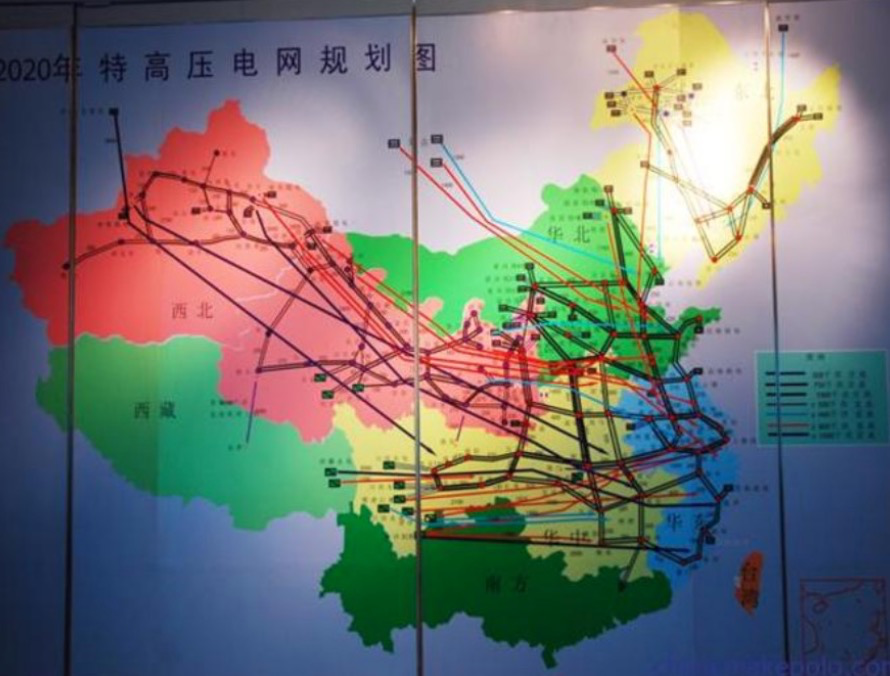
There are two reasons.
The first is the system. Our system is inherently good at concentrating on big things. More importantly, the state Grid has the courage to make a final decision.
"I felt a lot of pressure when I saw the failure of UHV in Japan and Russia, but I wanted to succeed in UHV for the sake of national development, no matter how big the risk," Liu said.
Even though there were objections that ultra-high pressure was too radical at the beginning, once the decision was made, State Grid could bear the pressure and go ahead resolutely. After building a line, facts would silence the voices of the opponents.
But not abroad. California's high-speed rail project, which began in 2008 and started in 2015, has been suspended for several times, but restarted after Biden took office and is expected to open to traffic as early as 2027. Why is it so hard to build a 300 + km bullet train? It's not just land acquisition and budget issues, but also opposition, such as state lawmakers' demands that the equipment and technology needed to build high-speed rail be 100 percent American.
To build the first high-speed rail, 100 % of the technology is required to be local. Even if the US is the world's largest country, it cannot be done in a short period of time. The construction period will only be delayed.
And then there's the Tesla Gigafactory project in Germany, which Musk originally had high hopes would become tesla's superengine along with the Shanghai plant. But Mr Musk is no longer under that illusion.
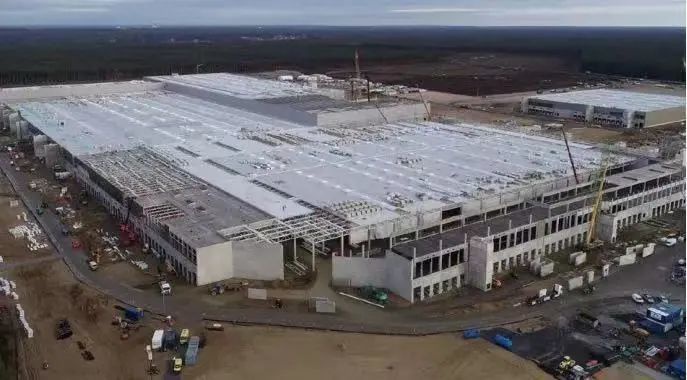
▲German factory in July this year
It took more than six months to level the ground for the Berlin plant, which was blocked by local residents and environmental groups for a variety of reasons, including but not limited to: protecting trees, protecting underground water, protecting bats in the forest and not disturbing hibernating snakes.
The electric car has killed the door to prepare the life of the fuel car, they are still in the leisurely leisurely "care for the environment", people and nature in harmony.
No courage to make a decision, no determination to carry out, to the end of any big things will be endless bickering and internal friction in the end.
The second reason is the market.
The failure of UHV power transmission in the United States, the Soviet Union and Japan was not due to poor technology, but to weak demand. Without huge demand, UHV power transmission would be meaningless. The country must be an industrial machine running at full capacity, with a dense population economically active to absorb sufficient electricity.
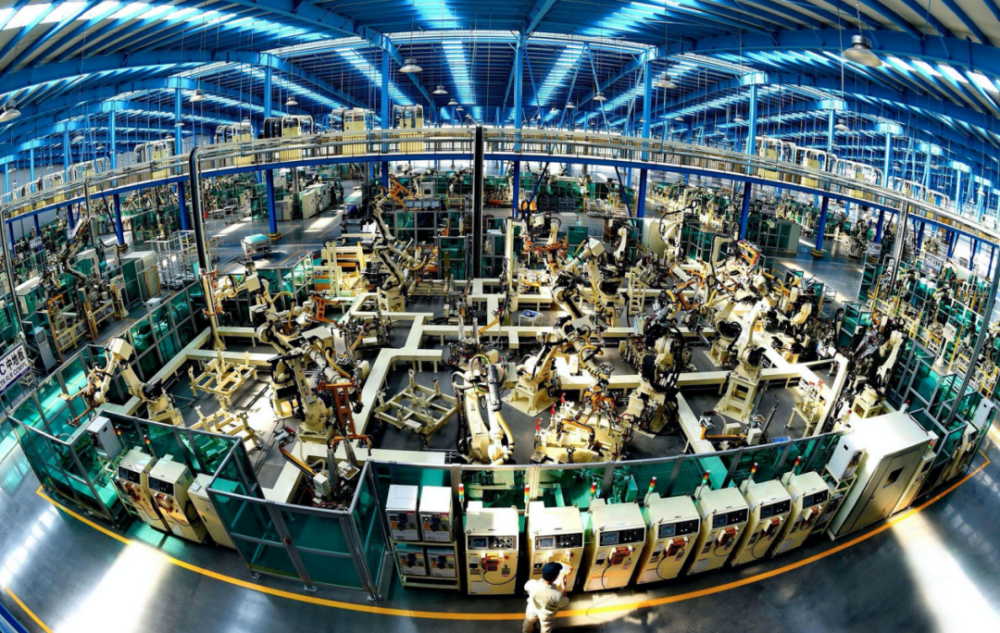
With a large population base and a large manufacturing industry, the UHV transmission project is meaningful only when this condition is met.
UHV power transmission itself is not technology or engineering, but a big project that needs overall consideration. The hand behind it is not so much China's power grid as the whole of China, the largest industrial country in the world.
Write in the last
State Grid is China's most powerful technology company.
State Grid topped the list of companies with 23,308 patents over the past five years.
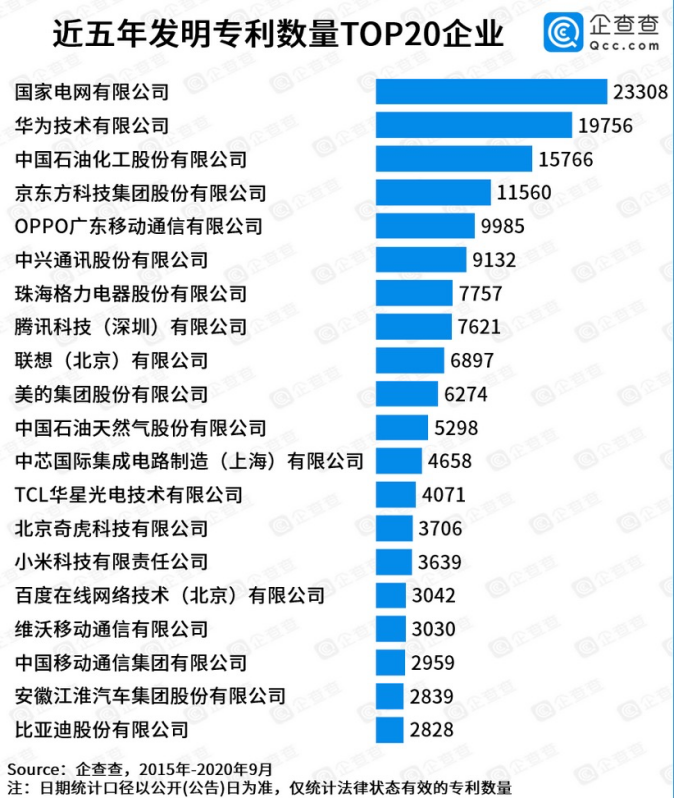
However, this is not the end, there are more challenges to overcome step by step.
For example, in the core transformer technology, compared with the world's advanced ABB and Siemens, we still lag behind.
For example, in the choice of DC and AC, we are a little "partial". One more word here. UHV DC is like a z-shaped car. It can't stop halfway to the end, while UHV AC is like a highway. Although the speed is not so fast, there are exits and stops in the middle.
Therefore, DC has the advantage of strong power transmission capacity. It is a high-power and long-distance point-to-point transmission, but it cannot form a network and has no power access, transmission and consumption within the network.
For a long time, we have paid more attention to the efficiency and cost of power transmission, so there has been a "strong and weak intersection" problem. The development of AC lines can strengthen the synchronous interconnection between power grids and ensure the safety and stability of the entire national power grid.
For example, if the North China Power Grid is short of electricity, but the Central China Power Grid is rich in electricity, transmission support can be realized. But up to now, there is actually only one UHV AC line between the two power grids in North China and central China, which cannot play a good role in regulating capacity.
Also, we still have low energy efficiency in the big western provinces.
According to the statistics of the National Energy Administration in 2019, the wind power abandoned in Xinjiang, Gansu and Inner Mongolia totaled 13.6 billion KWH, accounting for 81% of the national wind power. In northwest China, the amount of abandoned light electricity accounts for 87% of the national total, while that of Tibet, Xinjiang and Gansu is 24.1%, 7.4% and 4.0% respectively.
There is still a lot of clean energy wasted here, and we are giving back to nature what nature has given us.
The biggest load of 35 million kw of sichuan power grid, but in the province of the water and electricity installed power 90 million kw, which more than 70% of them are hydropower, a crane, of letan hydropower station installed power 16 million kw, because delivery not to go out, many power plants for the price of a few cents only sell electricity to dig small mines of digital currency.
The problems that Zhang guobao encountered in ertan hydropower station have not been completely solved today.
In the future, what is our goal, to build a truly connected power grid, an energy Internet, which radiates not only in China, but all over the world.
UN Secretary-General Antonio Guterres once said that China's UHV technology is crucial to the development of renewable energy, and the global energy Internet is the core of sustainable human development and the key to inclusive global growth.
What is the Global Energy Internet?
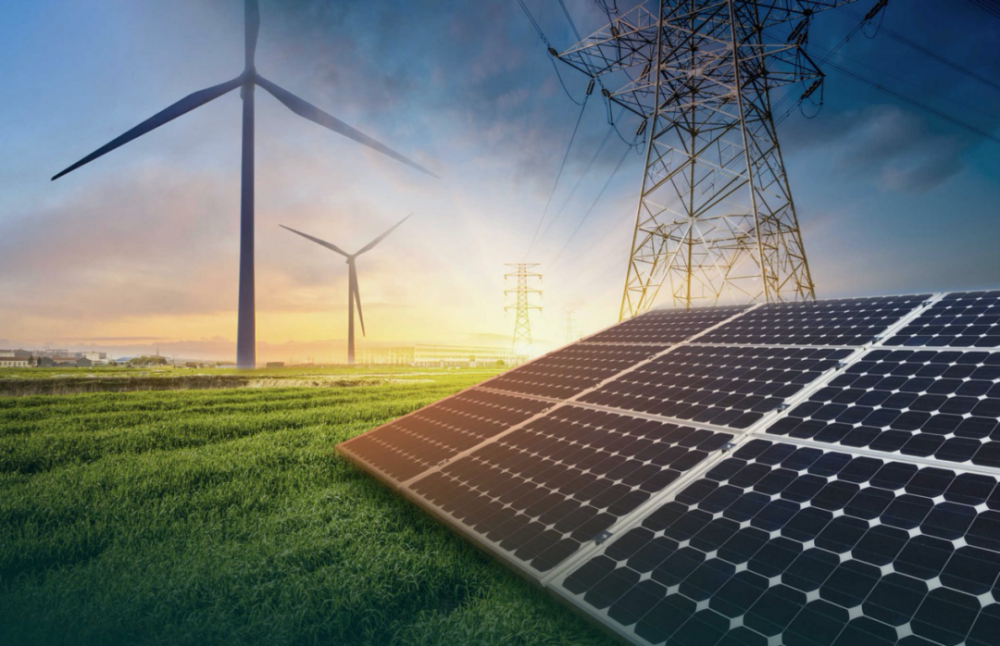
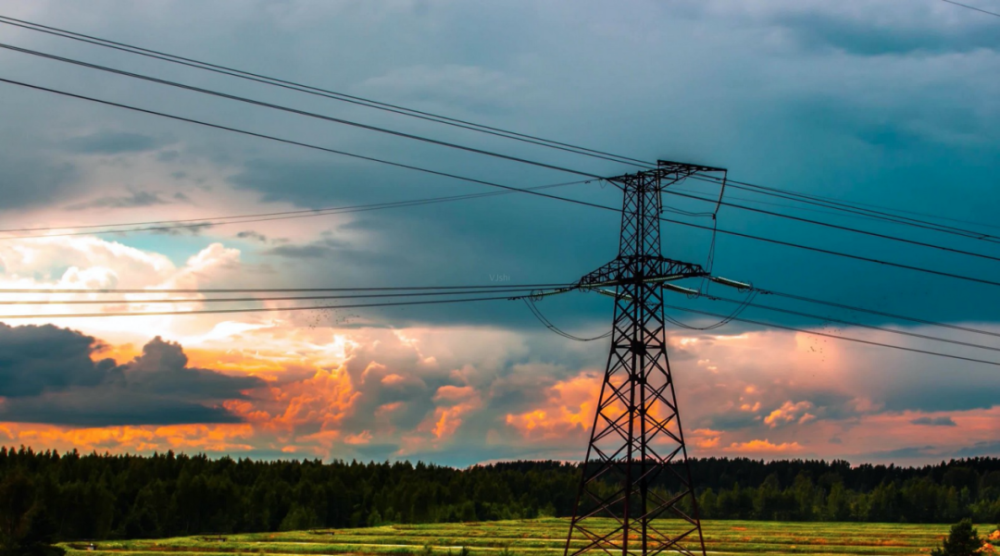
When the power system in the Middle East suddenly collapsed, the generators in our Southwest hydropower station were rushed into operation and started generating electricity. The electricity was put into the grid, coordinated between the major AC transmission networks, and the electricity was sent to Dubai in a matter of minutes.
Liu Zhenya said: if there is no broadband technology, the world can become a global village? The global energy Internet would have been unthinkable without UHV technology, and now it's actually operational.
The surging waters of the Jinsha River, bursting into turbines and roaring into the power grid, light up the streetlamps of Afghanistan at night;
The hot sun on the Tibetan Plateau shines on photovoltaic panels across 2,000 kilometers. Villages in Southeast Asia no longer need intermittent power supply.
The wind on the next beach, turning the huge blades of the windmill, so that every family on the Plains of Siberia can feel the warmth of winter;
This is the true community of shared future for mankind.
Let China's power grid to the world, our road has just begun.